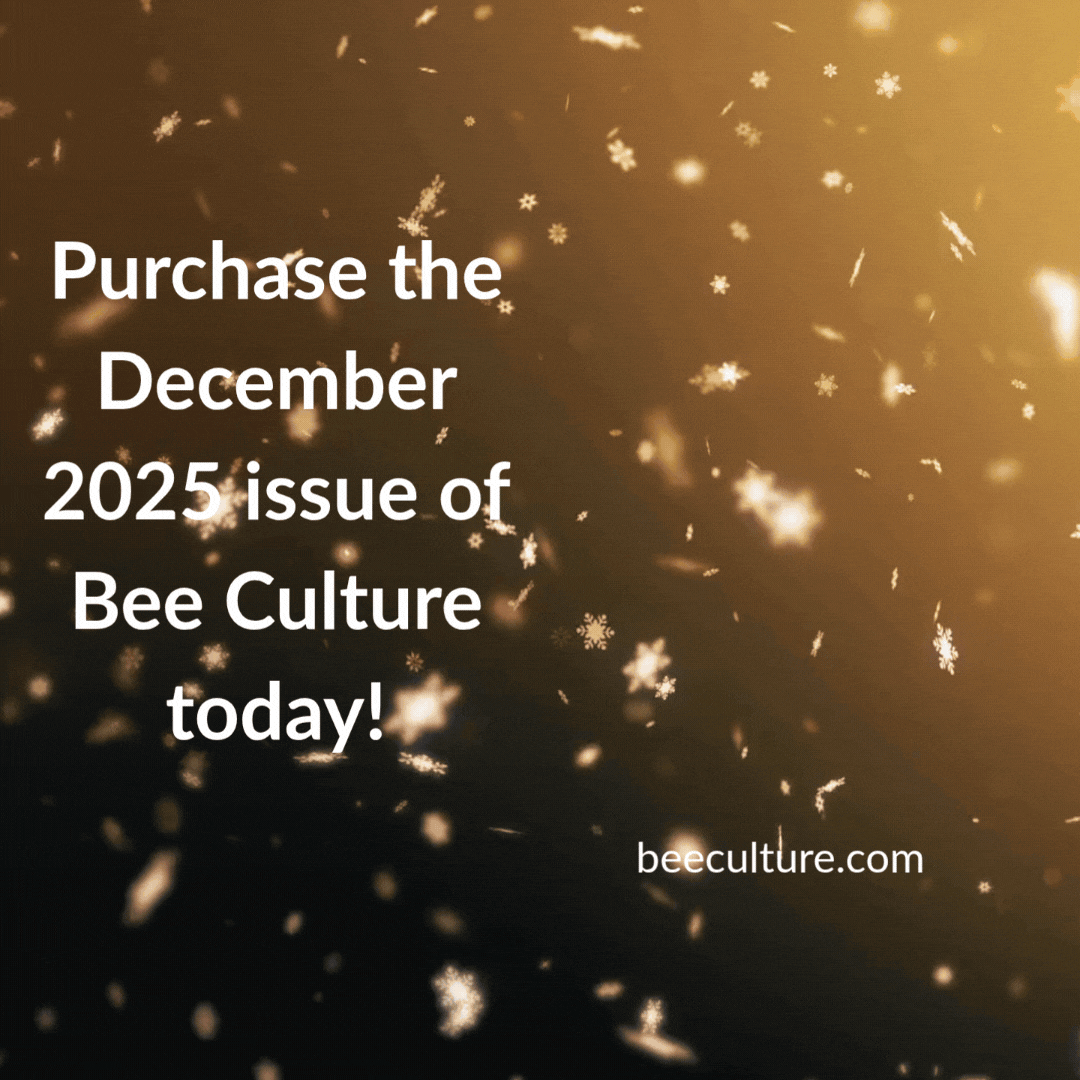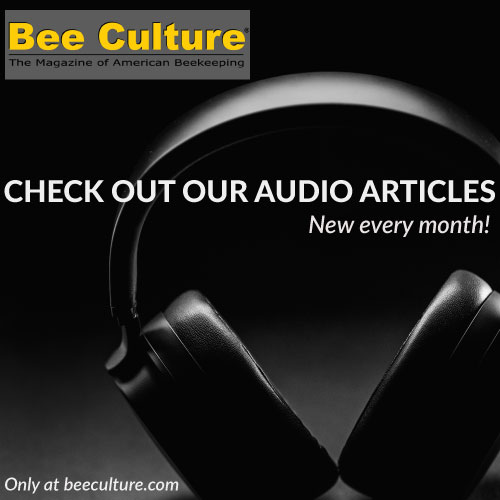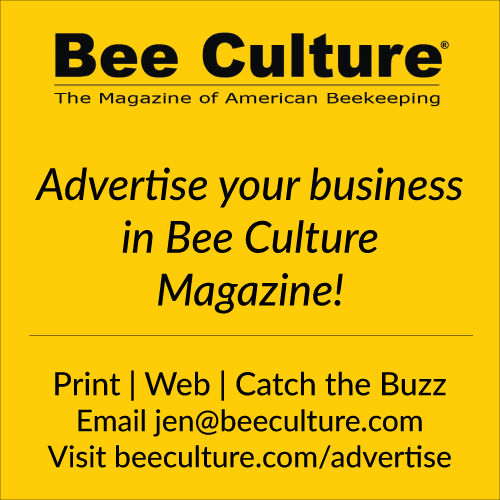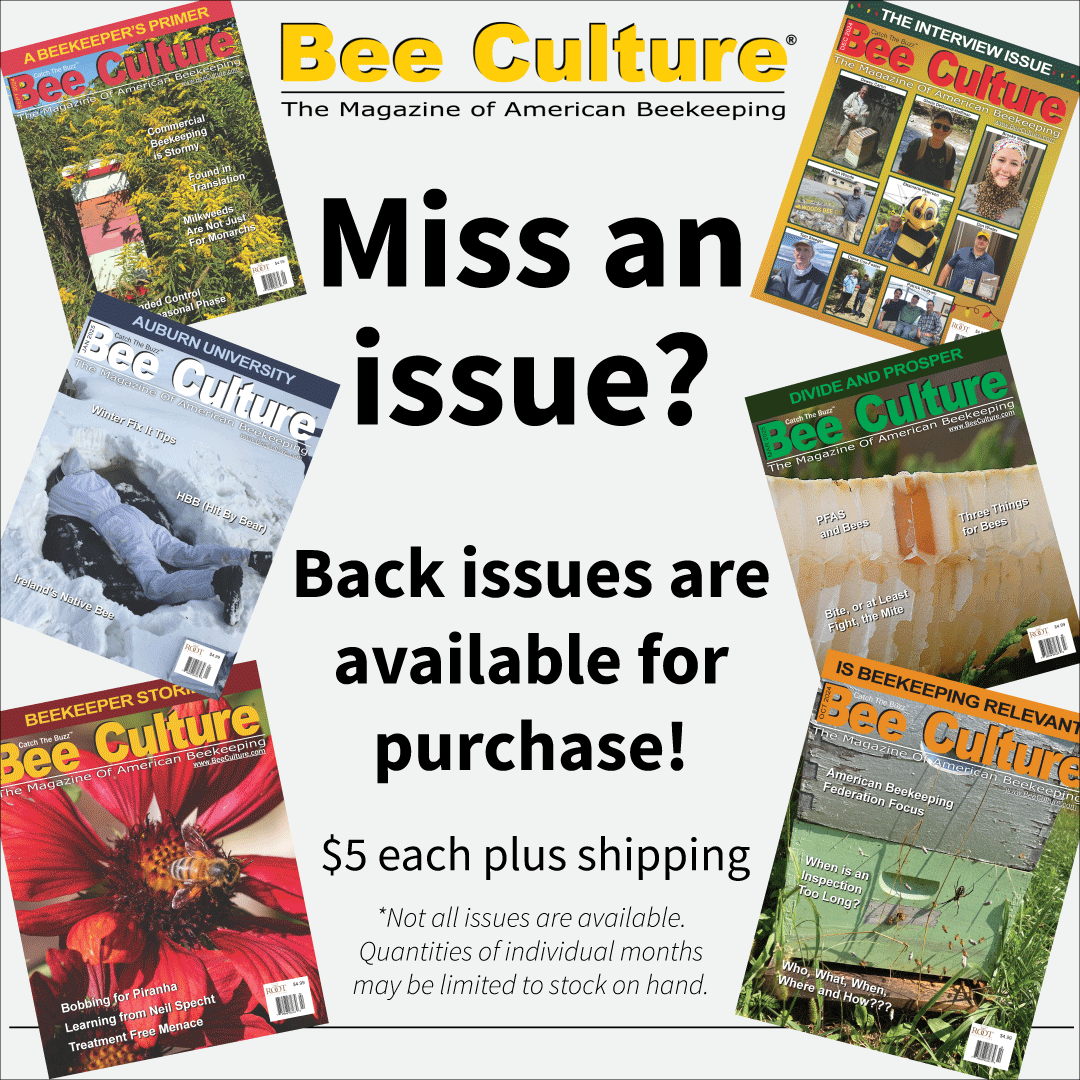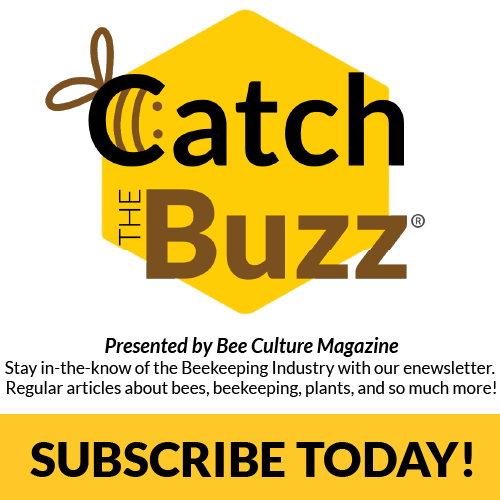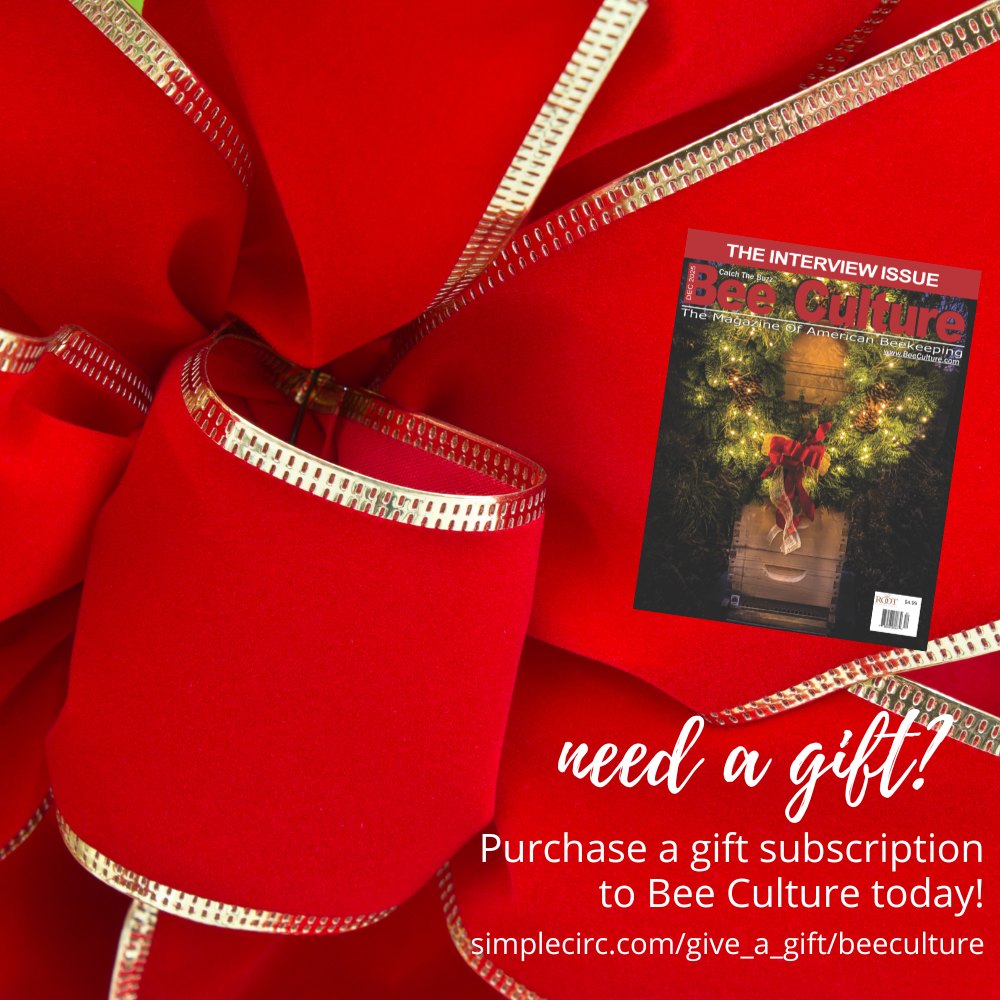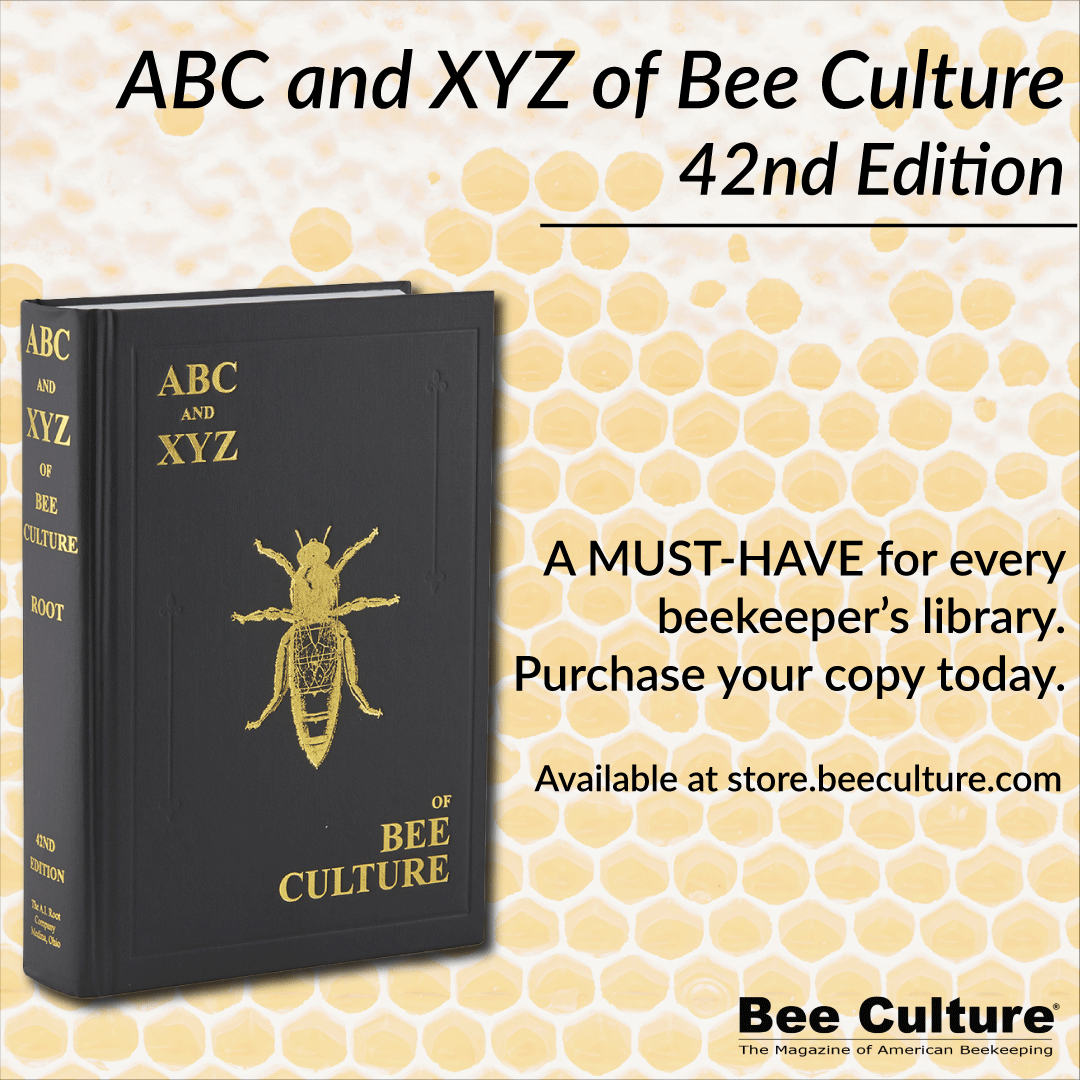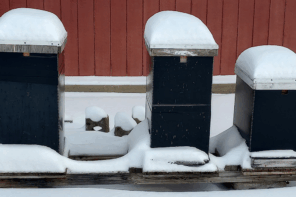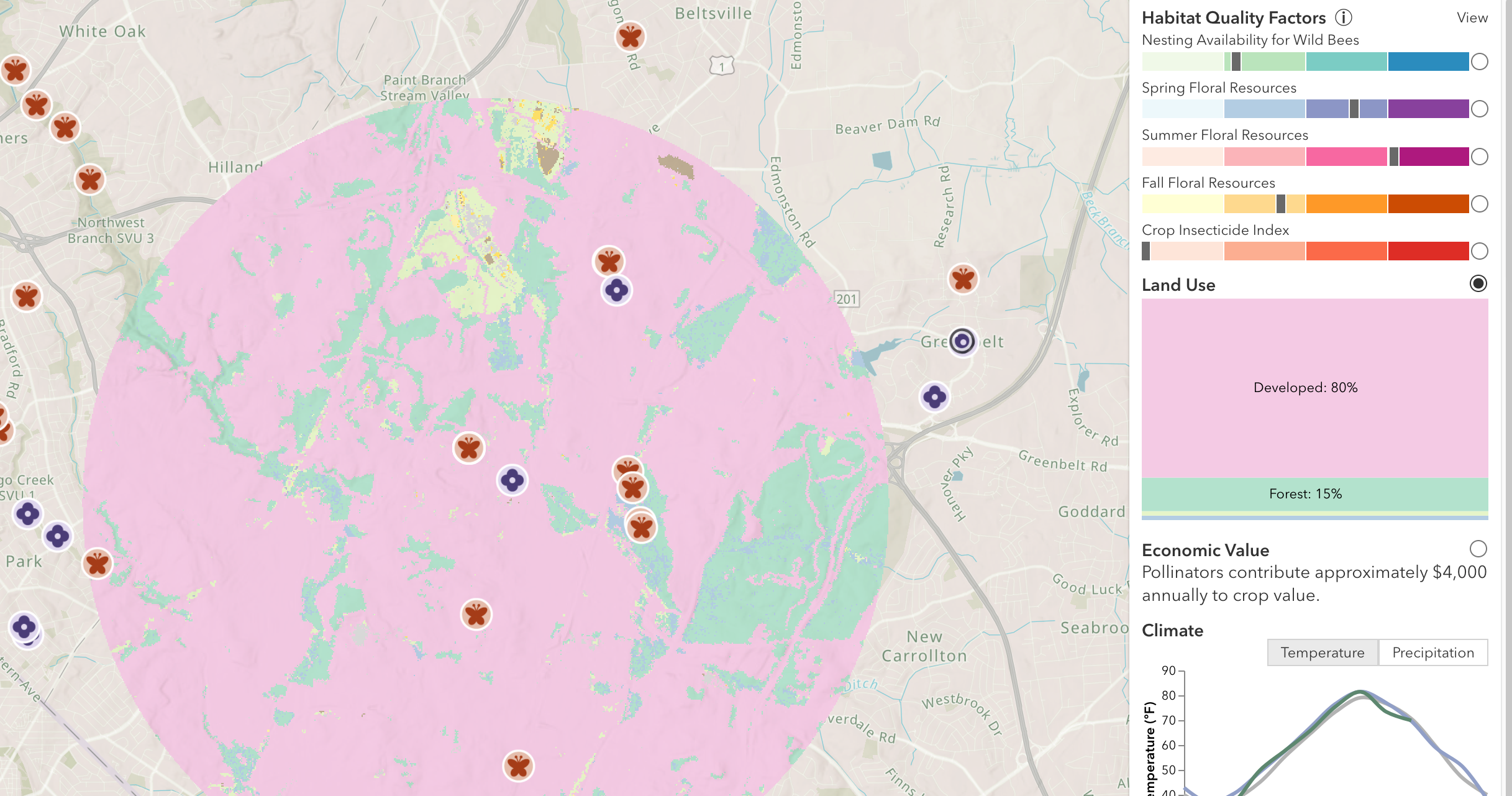By: Ann Harman
This article originally appeared in the Spring 2019 issue of BEEKeeping Your First Three Years
• Spring Cleaning – top to bottom.
• Choose a nice sunny Spring day, above 60°F with little or no wind for hive inspection.
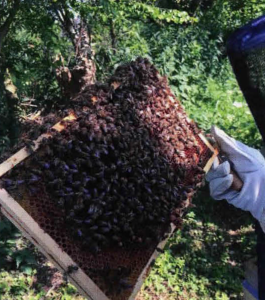 • Start at the top and continue all the way down including underneath the hive.
• Start at the top and continue all the way down including underneath the hive.
• Inspect each hive part and note anything for repair or replacement.
• Select any damaged comb for replacement during a strong nectar flow.
• If using foundation (Langstroth) mist it with 1:1 sugar syrup with Honey-B-Healthy, a stimulant.
• Note the food supply of both pollen and nectar.
• If necessary feed 1:1 sugar syrup and pollen patties.
• In small hive beetle areas, monitor pollen patties where SHB will feed.
• Note queen performance-colony numbers, brood pattern.
• If colony is weak, but free of disease, combine with strong colony or replace queen.
• Kill the queen in the weak colony before combining.
• If any disease suspected, contact local bee inspector or experienced beekeeper.
• Look for swarm signs – drones active, queen cells on bottom bars of frames.
• Learn swarm time in your area and plan your swarm prevention methods.
• If bottom brood chamber is empty, it can become the top one, called reversing.
• Brood chambers can be reversed every seven to ten days until strong nectar flow.
• Never split brood pattern when reversing.
• Honey supers should be ready before nectar flow begins.
• If feeding syrup do not put any honey supers on – stored syrup is not honey.
• Increase or decrease honey supers as necessary, depending on weather.
• Clean up beeyard from any Winter debris.
• If in bear or skunk country, inspect and repair electric fence.
• Learn your Spring nectar and pollen plants and where they are growing.

